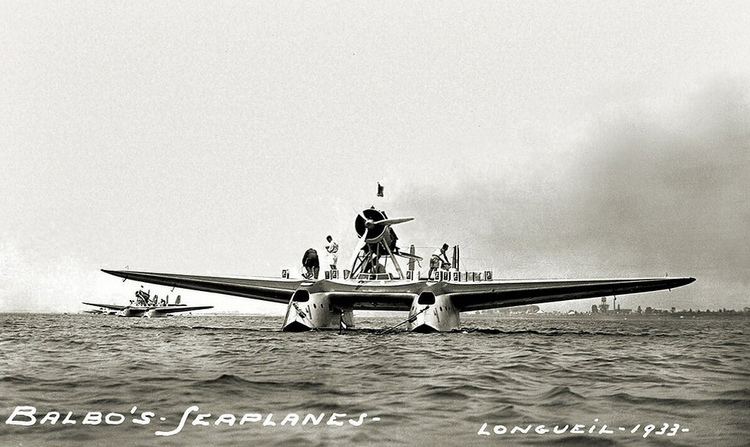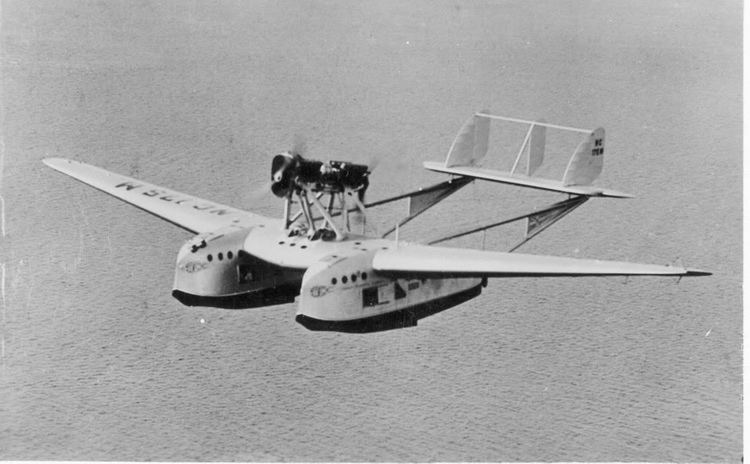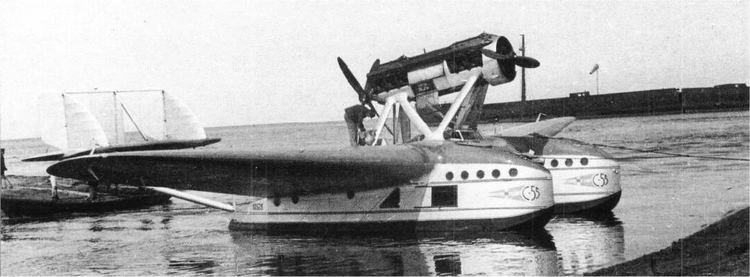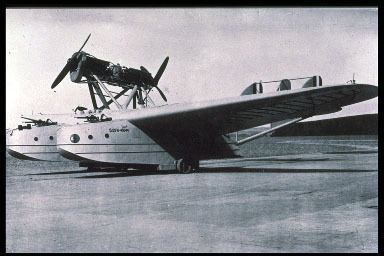Top speed 282 km/h Introduced 1926 Manufacturer SIAI-Marchetti Designer Alessandro Marchetti | Wingspan 24 m Retired 1945 First flight August 1924 | |
 | ||
Savoia marchetti s 55
The Savoia-Marchetti S.55 was a double-hulled flying boat produced in Italy beginning in 1924. Shortly after its introduction, it began setting records for speed, payload, altitude and range.
Contents
- Savoia marchetti s 55
- Savoia marchetti s 55x maiden flight
- Design and development
- Operational history
- Surviving aircraft
- Variants
- Civil operators
- Military operators
- General characteristics
- Performance
- Armament
- References

Savoia marchetti s 55x maiden flight
Design and development

The S.55 featured many innovative design features. All the passengers or cargo were placed in the twin hulls, but the pilot and crew captained the plane from a cockpit in the thicker section of the wing between the two hulls. The S.55 had two inline counter-rotating propellers, achieved by mounting the twin engines back to back. The engines were canted sharply at an upward angle. Two wire-braced booms connected the triple-finned tail structure to the twin hulls and wing.
Operational history

Even though its design was unusual, the Savoia-Marchetti S.55 was a remarkably airworthy craft. In 1926, the S.55P prototype set 14 world records for speed, altitude and distance with a payload. The S.55's greatest successes, however, were its many flights between Europe and the Americas.

The Brazilian João Ribeiro de Barros and his crew of three made an Atlantic crossing in S.55 "Jahú" on 24 April 1927. Departing from Santiago Island, he crossed the Atlantic in "Jahú" and landed at Fernando de Noronha Island, Brazil.

The Savoia-Marchetti S.55 made a number of early crossings of the Atlantic Ocean at a time when doing so was still a very risky and challenging venture, starting when the Plus Ultra, a Spanish Dornier Wal piloted by Ramón Franco, crossed from Spain to Buenos Aires, Argentina, in January 1926, then Santa Maria under Francesco de Pinedo took off from Dakar, Senegal to Pernambuco, Brazil on 13 February 1927. This was three months before Charles Lindbergh's solo crossing, but nearly 8 years after Alcock and Brown had completed the first non-stop crossing in 1919 in a Vickers Vimy. After crossing the aircraft was traded to Brazil for coffee beans.

Pilots Francesco de Pinedo and Carlo del Prete took off from Sesto Calende, Italy, in an S-55 and headed west across the South Atlantic. Four months later, they arrived back in Italy, having flown nearly 48,280 km (30,000 mi) in 193 flying hours and having made just over 50 stops, including Rio de Janeiro, Buenos Aires and New York City.
The Italian Air Marshall of the time, Italo Balbo became famous for organizing a squadron of S.55s for Atlantic crossings, culminating in his 1933 flight with 24 aircraft to Chicago's Century of Progress International Exposition. On 1 July 1933, General Balbo commanded a flight of S-55s from Orbetello, Italy, completing the flight in just over 48 hours, maintaining a tight "V" formation. These large fleets of aircraft were sometimes called a "Balbo".
The aircraft went on to serve in the Regia Aeronautica as a long-range bomber and patrol aircraft, but by World War II, the last S.55s were no longer serviceable and were in reserve.
Surviving aircraft
The last remaining example is preserved in Brazil, at the TAM "Asas de um sonho" museum, at São Carlos, São Paulo. The aircraft, registered I-BAUQ and named "Jahú", was the S.55 used by Commander João Ribeiro de Barros in his crossing of the South Atlantic in 1927.
